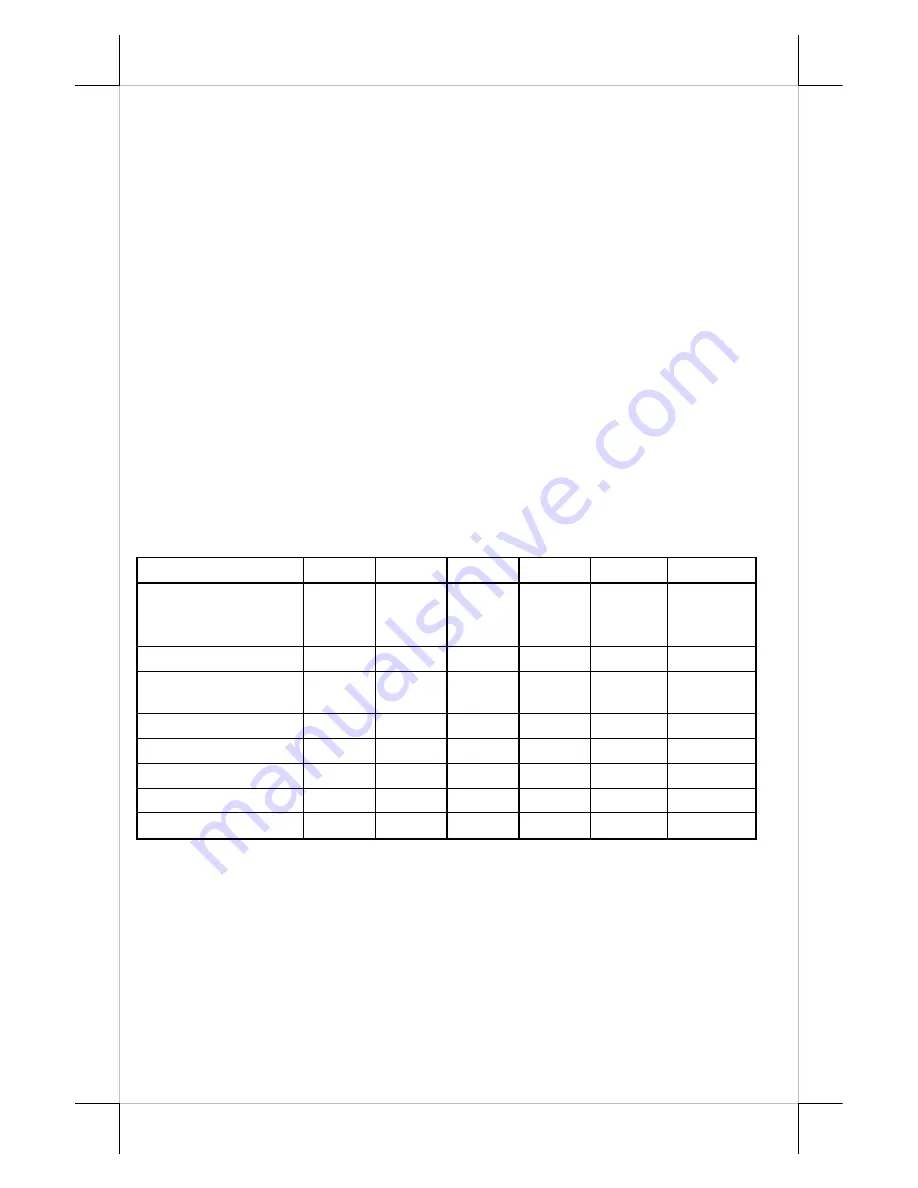
Part 8
USING THE CUSTOMER DISPLAY
INTERRFACE SELECTION
This series of customer display is designed to serve in HT / KS / TP
series Posiflex POS systems with RS232 interface models and with USB
interface models. It is
advisable to well study the I/O port availability of the
host system before determining which interface model to be used.
When a RS232 (serial) interface model of PD-2601 / 2602 is used, the
jumper on main board of HT / KS / TP system must be modified to supply
power to the COM port designated for PD-2601 / 2602. Whenever the RS232
interface PD-2601 / 2602 is to be removed from the HT / KS / TP system,
consequently the jumper has to be changed back to neutralize the COM port,
otherwise damage could occur
!
The USB interface model of PD-2601 / 2602 should be connected
directly to an USB port and
must not be through any USB HUB
to get power
through the USB port itself and there is no need for other special arrangement.
COMMAND MODE SELECTION GUIDE
The below table provides some comparison for selection on command
mode to be used in the application program if it is not yet determined.
Mode
ADM
Aedex
Epson
Futaba Noritake UTC
Cursor
N.A.
N.A.
Invisible
Blinking
Block
Blinking
Block
Blinking
Block
(DP)
Default mode
N.A.
N.A.
Over/W V. scroll Over/W PT
User defined font
N.A.
N.A.
2 chars N.A.
2 chars
2 chars
(PT)
Brightness control
NO
NO
YES
YES
YES
YES (DP)
Leading code change NO
YES
NO
YES
YES
YES (PT)
Code page select
NO
NO
YES
YES
YES
YES
Auto scroll message
NO
NO
NO
YES
YES
YES (PT)
Timer clock
NO
NO
YES
NO
NO
YES (PT)
DRIVER INSTALLATION
For application software to use RS232 interfaced PD-2601 / 2602,
there is no direct need for any driver. The OPOS (OLE POS) driver or the
JPOS (Java POS) driver would be required for OPOS or JPOS programs and
the PD-2601 would have to be set to “Epson” command mode. These drivers
are available from our web: http://www.posiflex.com
For USB interfaced PD-2601 / 2602, please visit our web site and find
the driver from the class “PD23_26U”. The guidance for each function call in
the library “USBPD.dll” is covered in the “ReadMe” file in that class.



























